America at it's Best & Worst
- Nathan and Lori
- Aug 7, 2017
- 8 min read
“You can kill a man, but you can’t kill an idea”
Medgar Evers
State 9: Michigan - July 24, 2017
We woke up at the Southgate, MI Walmart, ready to begin exploring our 9th state on our year-long cross country trip to discover America, and find a new state to call home. What better way to commence exploration of a brand new state than with an “Can't Miss Attraction” The Henry Ford Museum in Dearborn, MI. Before departing for the museum, we had another challenging logistical issue to address. Since we were now in Michigan, the auto capitol of the country, we knew exactly what our “Made in the USA” tour would be for the state. However, Detroit, The Motor City, has the highest violent crime rate in the entire country, and there was no way we were going to go anywhere near the city. In addition, many of the US auto manufacturing plants have been outsourced to Mexico. We even researched where our Rosie was built, and it turns out Dodge Promaster vans are built in Mexico as well. Bummer! We then began researching every American automaker, and every American model vehicle we could think of all to no avail. We were not very optimistic about finding an auto manufacturing plant to tour, that was open to the public, built in the USA and located outside of Detroit. We were absolutely tickled pink to discover our destination for today, the Henry Ford Museum of American Innovation, also offered a tour of the Ford Rouge Factory where the F-150 pick-up truck is built in Dearborn, MI. To make things even better, we learned the factory was currently in production the day we visited. This was shaping up to be an exciting day!
While there are many options for touring the museum, we decided to visit the Henry Ford Museum of American Innovation, and the Ford Rouge Factory Tour for $33.00 per person. We decided to start our day with the tour of the Ford Rouge Factory to see how the top selling pickup truck in America for the past 30 years was built.
We boarded a bus outside of the Ford Museum for a bumpy 10-minute ride across town to the visitor’s center. There were 4 parts to the tour at the plant. The first part was an archival movie depicting the history of The Ford Motor Company and the Ford Rouge Plant. The second part consisted of another movie showing the present and future of the company. However, to call this a movie would be an insult as the presentation could rival any professional Hollywood production. There were gigantic screens surrounding you in 360 degrees, there were strobe and laser lighting, wind and smoke effects, and even hot and cold temperature changes with in the room during appropriate moments of the show. If all that was not enough, they had a pick-up truck rise up out of the floor, and 2 huge robot arm on each side of the truck that virtually constructed, welded and painted the truck while the movie explained the manufacturing process. What an experience!
After the historical documentary, and the subsequent action thriller movie, it was time for the grand finale! It was time to see a Ford F-150 Truck being built! Not so fast! First we were all lined up to hear the rules, and by the looks of the large burly men in security uniforms present, they took their rules very seriously. I was beginning to get worried if at the conclusion of the tour they would force me to sign a lease for a new F-150. None of their rules were unreasonable, and most were either common sense or common courtesy. We were sad to learn they would not allow pictures of the assembly plant. They made it clear if we took our phones out even to look at the time, our phones would have an unfortunate interaction with the security officers who were watching our every move. We were all told that by entering the plant we agree to adhere to these rules, and if we have a problem with any of the stated rules we should leave right now! Since no one objected or left, we were all granted access to the assembly plant to see live production of the F-150 truck.
As soon as the doors opened we were presented with a 1/3 mile square shaped catwalk that surrounded the entire perimeter 1 floor above the manufacturing plant. The first thing I noticed was Ford's famous conveyor assembly line was still in use, and was very special to see. The next thing I noticed and most surprising, was the hundreds of people who were assembling the cars below us. I was expecting to see robots doing all of the assembly work, but they were only used for heavy lifting like transporting the frame, or delicate operations like windshield installation. Each worker along the line had a specific part to install, such as the head light, visor, trim, decals, tailgate, flooring, seat belts and so much more. Each truck built is by special order, and there are over 600,000 different option combinations on the F-150. If one worker makes a mistake it can result in a car accident or a massive factory recall. Seeing hundreds of American workers of different sexes, ages, and races working together as one unit so effortlessly and seamlessly was a beautiful thing to witness.

Henry Ford was not only an auto industry innovator, but he was a visionary who changed the world. By utilizing an assembly line, Ford mass produced quality and reliable cars affordable for the common man. Today, the CEO of Ford is Henry Ford's great grandson. We got see the innovations he is implementing at Ford to modernize the brand and innovate the automobile market place. To view Ford’s most recent and most surprising innovations, we had to take an elevator 8 stories up to the roof of the Ford factory. Upon exiting the elevator, we were absolutely shocked by what we saw! The entire roof of all of the Ford buildings were covered in grass. The tour guide called it a living roof. Since the rain water is absorbed by the root system of the grass, 50% less rain water makes contact with the roof thus doubling the roofs lifespan. In addition, the grass helps to clean and purify the air naturally via photosynthesis. I am so glad I am not the one who has to mow the massive lawn on top of the Ford factory! After taking the elevator back to the ground floor, I stopped in the men’s room, and couldn’t help but chuckle after taking the pic below.

Apparently, Ford found a very innovative and creative way to save money and help the environment by growing grass on their factory roofs. However, they could not be bothered to install electric hand dryers in their bathrooms. It is well known that hand dryers: would save thousands of dollars in paper towel and custodial costs annually, prevent hundreds of trees from being cut down, and prevent tons of trash from going into landfills. This is just another example of Ford doing great with the big picture, but dropping the ball when it comes to the details. This is the reason I will never buy a Ford product!
We then caught the bus back to the Ford Museum of American innovation. Ford actually founded the museum during his lifetime. He did so solely to ensure the greatest achievements in American innovation, and priceless relics related to American History were preserved for all time. Some of the most noteworthy pieces in the museum's collection are: The exact chair President Lincoln was sitting in when he was assassinated, George Washington’s signed documents, his trunk bed, and mess kit he used during the American Revolution, and two Authentic 17th century Italian Stradivarius violins worth 2 million dollars each! They also had the presidential car collection which included every presidential vehicle from Teddy Roosevelt’s horse drawn carriage up to Ronald Reagan's limo where he was rushed to the hospital after an attempted assassination. The most significant and poignant piece in the collection was the exact car where President Kennedy was assassinated on that fateful Dallas day on November 23, 1963. The pictures are listed in order below.
The exhibit I was most excited to see at the Ford Museum was the Rosa Parks bus. This was the exact bus where she refused to give up her seat to a white man, which was the catalyst for the civil rights movement. However, what happened to the bus in the decades since, is a story unto itself. The bus remained in service in Montgomery, AL until 1970. It then was purchased by a farmer, used it as a storage shed, and kept it in an open field for the next 30 years. When the owner of the farm, passed away in 2000, the children listed the Rosa Park Bus on ebay. The Henry Ford Museum won the auction beating out 18 other museums. However, the bus was in deplorable condition from 30 years of exposure to the elements, and required a massive restoration.
In 2002 the restoration on the bus was complete, and Rosa Parks, a Detroit native, was brought to the museum for the unveiling. At 89 years old, she boarded the bus, and once again sat in the exact same seat she once did all those years ago, which is pictured below. Man, I wish I could have been there to witness her reuniting with that bus! Also of interest during Obama’s re-election campaign, he visited the Rosa Parks bus, but said he did not feel worthy to sit in the seat she once did. He sat in the seat next to where she sat which is pictured below. We were pleased to learn visitors were allowed to enter the bus, and to sit in the seats while we were taught the history of the Rosa Parks Bus by a guide. It was an honor, privilege, and forever memorable experience for me to sit in the exact seat where Rosa Parks once did, which is pictured below. This has been hands down the most powerful and memorable moment in my trip! Lori decided to sit in the seat that President Obama did during his visit, which is also pictured below.
Once of the most interesting displays in the museum is something called an “Exploded Model T”, and the car was listed on the National Record of Historic Vehicles. The car is suspended in mid air, and shows each piece of the car disassembled, and also suspended in mid air. This displays all of the individual parts that made up the model Ford Model T, and how they fit together. It can be best understood by viewing the pictures below. In addition, Lori and I posed for a picture inside of Ford Model T that was assembled and on the ground also pictured below.
The Henry Ford Museum had hundreds of cars planes, trains, signs, early agriculture equipment, original generators that powered the first light bulbs, and so much more. Even the costume Evil Knievel wore when he jumped the Snake River Canyon was on display. There are some additional pictures below.
We could have spent days there, and not have seen everything. The entire museum was a celebration of American innovation, and my hope is America can become a world leader in manufacturing and innovation once again. After leaving the Henry Ford we drove 60 west miles to a Fowlerville, MI Walmart, and had a restful night sleep.










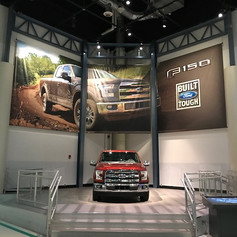































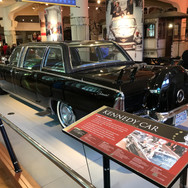



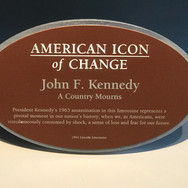



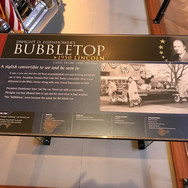









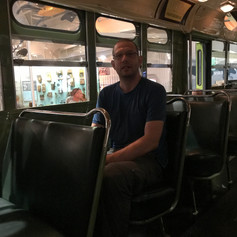
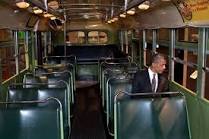













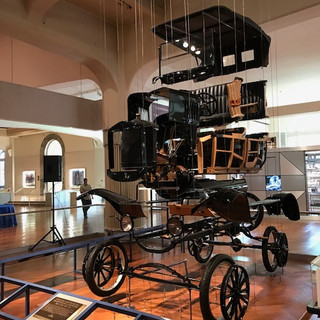

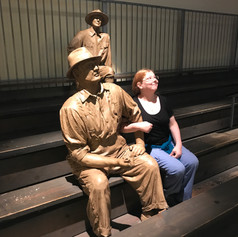



























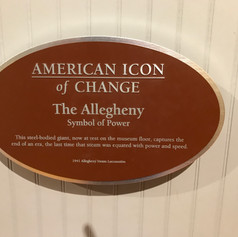


Comments